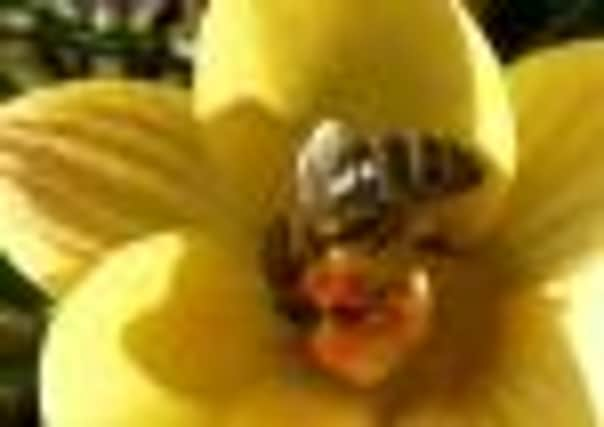Lessons in life from A to Bee


When Allan Jefferson was a lad of 15, he carried his first colony of bees on the bus. “What yer got in there then?” asked the conductor, pointing to his buzzing sack. Allan who is 77 now laughs: “By the time I got home there was only me and the conductor at the back of the bus.”
Allan has been keeping bees at Dalehouse, near Staithes for 62 years and is head of a remarkable Yorkshire beekeeping dynasty. With his son Tony and grandson Richard they are part of a cottage industry that between them can claim 100 years of beekeeping.
Advertisement
Hide AdAdvertisement
Hide AdWith 50 or more hives and five and a half million pure bred native British black bees, the Jeffersons annually produce some 2,500 jars of heather honey, mixed flour honey, and honeycomb that regularly sweep the board at the National Honey Show as well as The Great Yorkshire Show and Countryside Live at Harrogate.
They are a very big noise in the bee world and have done long service as judges and officials of various bee associations.
In recognition, Allan Jefferson attended the Queen’s garden party at Buckingham Palace and through the Royal Beekeeper’s interest it is a safe guess that the Jefferson’s Stonelea honey has found its way onto the Royal slice of bread.
Their home, Stonelea Apiary, is set in a secluded wooded valley beside Roxby Beck, near Dalehouse. In this idyllic spot they keep 35 of their hives and use a restored Nissen hut as a workshop and store. Allan, a retired joiner and former Clerk of Works for Whitby council, is down there most days, preparing the hives for spring when they are moved to wherever the flowers bloom and the hard work begins.
Advertisement
Hide AdAdvertisement
Hide AdFirst to flower in May is the oil seed rape which Tony says has been a boon. “Rape may not be popular with many people, but it makes a beautiful honey,” says Tony. This along with blossom from hawthorn, sycamore, bramble and willow herb makes up their mixed flower honey.
When he found a ditch filled with Himalayan Balsam near his work at the former ICI Wilton Works, Tony asked if he could bring in his hives. “It was just an experiment with a few hives,” he says, “ it made wonderful honey.” It is the heather honey from the North York Moors for which Stonelea is most justly famous. With 554 square miles of ling and bell heather, the Moors have the biggest expanse of heather moorland outside Scotland, a magnificent purple carpet that flowers in August. By September when the hives are heavy with honey they are taken down off the moors. “They’re so heavy I can’t lift them any more,” says Allan so Tony and his nephew Richard load up their van and transport them back down to the workshop where the honeycombs are put in a centrifuge to extract the honey. It’s then filtered and jarred.
By October the first batch is in the local Lyth family butchers shops in Hinderwell and Staithes and Bothams of Whitby who sell it worldwide. Later the hives will be packed with sacking to keep them warm and dry through the winter and the bees will be fed with supplements of fondant icing until the whole cycle begins again.
Between the different day jobs that they have - Tony is an electrical engineer and Richard runs his own company – they sell beekeeping equipment, give lectures and demonstrations and hold an open day.
Advertisement
Hide AdAdvertisement
Hide AdAnd now in response to the upsurge in interest in beekeeping they’ve compiled a simple, no-nonsense guide.
Allan wanted to call it “Beekeeping without the Bull….”. They settled on The Jefferson Beekeeping Guide, which costs £5, from Stonelea Apiaries, 1 Dalehouse Bank, Staithes, Cleveland, TS13 5AN.
www.bbka.org.uk/local/whitby
07749 731945
Stonelea Apiary Open Day for Beginners: April 29.
Honey bees bounce back
Professor Ian Rotherham writes: For the first time for a few years, my wildlife garden is full of honey bees. I had similar reports from people across Yorkshire.
It’s great news after several years of predictions about likely imminent extinction. ‘Colony Collapse Disorder’ may at last be on the wane. The Journal of Apicultural Research a year ago reported that beekeepers were losing fewer colonies over the winter period.
In some countries the losses have dropped by more than a half of the all-time high of about 60 per cent of nests.